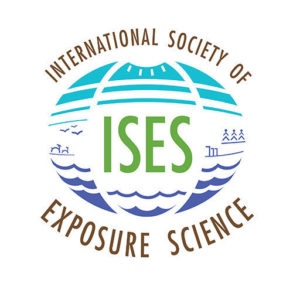About ISES
Our Vision
To better our world, its ecosystems, and inhabitants, by creating an international community that advances and integrates exposure science into research and action.
Our Mission
ISES works to meet humanity’s needs for public health and environmental protection through a global community of exposure science professionals. ISES encourages the open exchange of information, provides opportunities for career development, acknowledges and promotes excellence in the practice of exposure assessments and research in the field of exposure science.
Our Strategic Plan
ISES is poised for growth and innovation. We are currently building on our 2020-2025 strategic plan and will be launching a new strategic plan soon to guide ISES into 2026 and beyond. Stay tuned!
ISES works to meet humanity’s needs for public health and environmental protection through a global community of exposure science professionals. ISES encourages the open exchange of information, provides opportunities for career development, acknowledges and promotes excellence in the practice of exposure assessments and research in the field of exposure science.
Board of Directors
The views and opinions expressed by ISES are those of the Society and should not be attributed to the individual Board members’ agency or organization.
Below are some operational materials helpful for managing the business of ISES:
Current Bylaws (last updated October 2025).
Anti-Harassment Policy (updated 2018).
ISES Policies and Procedures (ongoing updates).
ISES Board Member Job Descriptions (last updated May 2025).
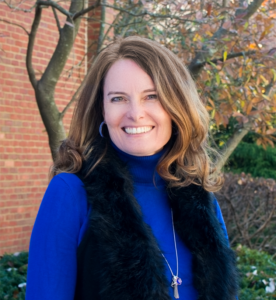
President
Erin Haynes
Erin N. Haynes, DrPH, MS is the Kurt W. Deuschle Professor of Preventive Medicine and Environmental Health in the Department of Epidemiology and Environmental Health at the University of Kentucky (UK), College of Public Health. She is also the director of a NIEHS-funded Environmental Health Sciences Core Center at the UK Center for Appalachian Research in Environmental Sciences (UK-CARES). She is a community-engaged environmental health scientist with broad experiencing with exposure science and environmental epidemiology. Hallmarks of her research include a strong multidisciplinary research team that focuses and prioritizes community environmental health research needs. She is currently a member of the Board of Scientific Counselors for the National Toxicology Program, served on the National Academies of Sciences Committee on the Guidance for PFAS Testing and Health Outcomes and the NASEM East Palestine Train Derailment Workshop, has served as a standing study section member of NIEHS Environmental Health Study Section, and co-Chair of the NIEHS Disaster Response Research (DR2) Network Committee. Dr. Haynes has worked with communities facing issues related to hazardous waste incineration, PFAS, manganese refining and processing, landfill emissions, and disasters. Her research expands environmental epidemiology, biomarkers of exposure and effect, health outcomes including neurodevelopment, and report-back for individual participants and for the community. She is the ideal contact for communities concerned about their exposure and for researchers wanting to engage with communities and develop strong partnerships and data communication strategies.
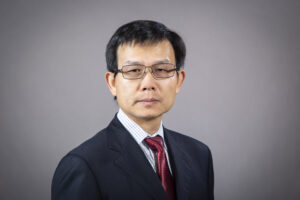
Kai Zhang, MS, MA, PhD, is a Professor in the College of Public Health at the University of North Texas Health Science Center at Fort Worth. Dr. Zhang received a PhD degree in Environmental Health and an MA degree in Statistics at the University of Michigan, and an MS degree in Environmental Engineering from Tsinghua University in China, respectively. Dr. Zhang’s research interest focuses on characterizing climate-related exposures using advanced statistical techniques and artificial intelligence methods, reducing the human health effects associated with disasters, and exploring the role of social and environmental stressors (air pollution, natural environment, built environment, and green space) in relation to aging-related diseases. His expertise includes exposure science, exposome, air quality, epidemiology, GIS, statistics, and data science. Dr. Zhang currently serves as Associate Editor for Science of the Total Environment and Journal of Exposure Science and Environmental Epidemiology. His research has been featured in prestigious international journals, including Nature Medicine, Nature Climate Change, Nature Communications, Science Advances, Circulation, Circulation Research, American Journal of Respiratory and Critical Care Medicine, Environmental Health Perspectives, and Environmental Science & Technology, among others.
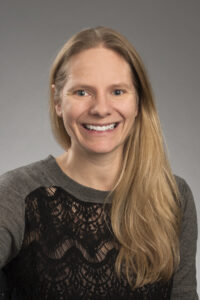
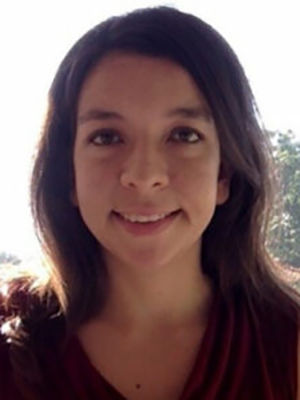
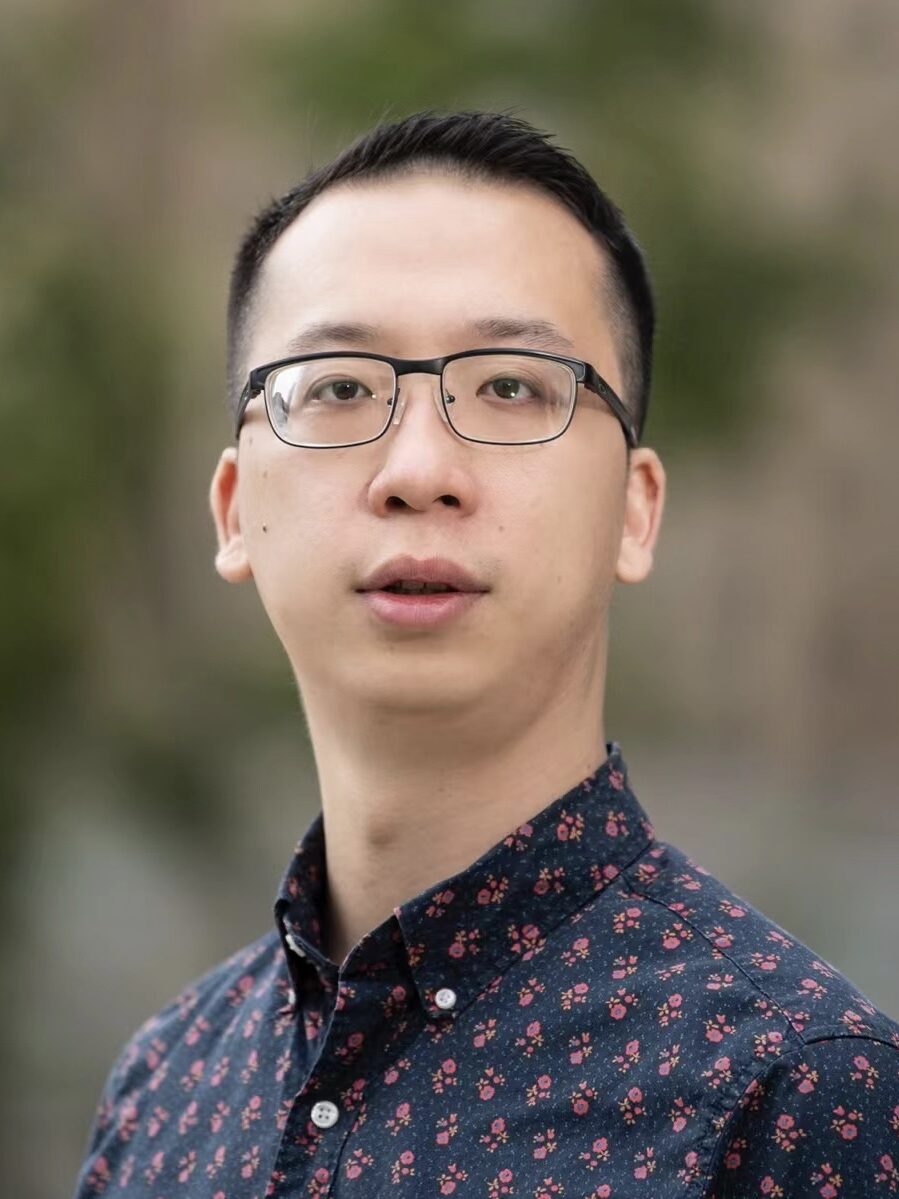
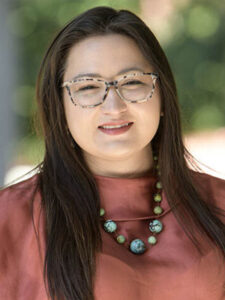
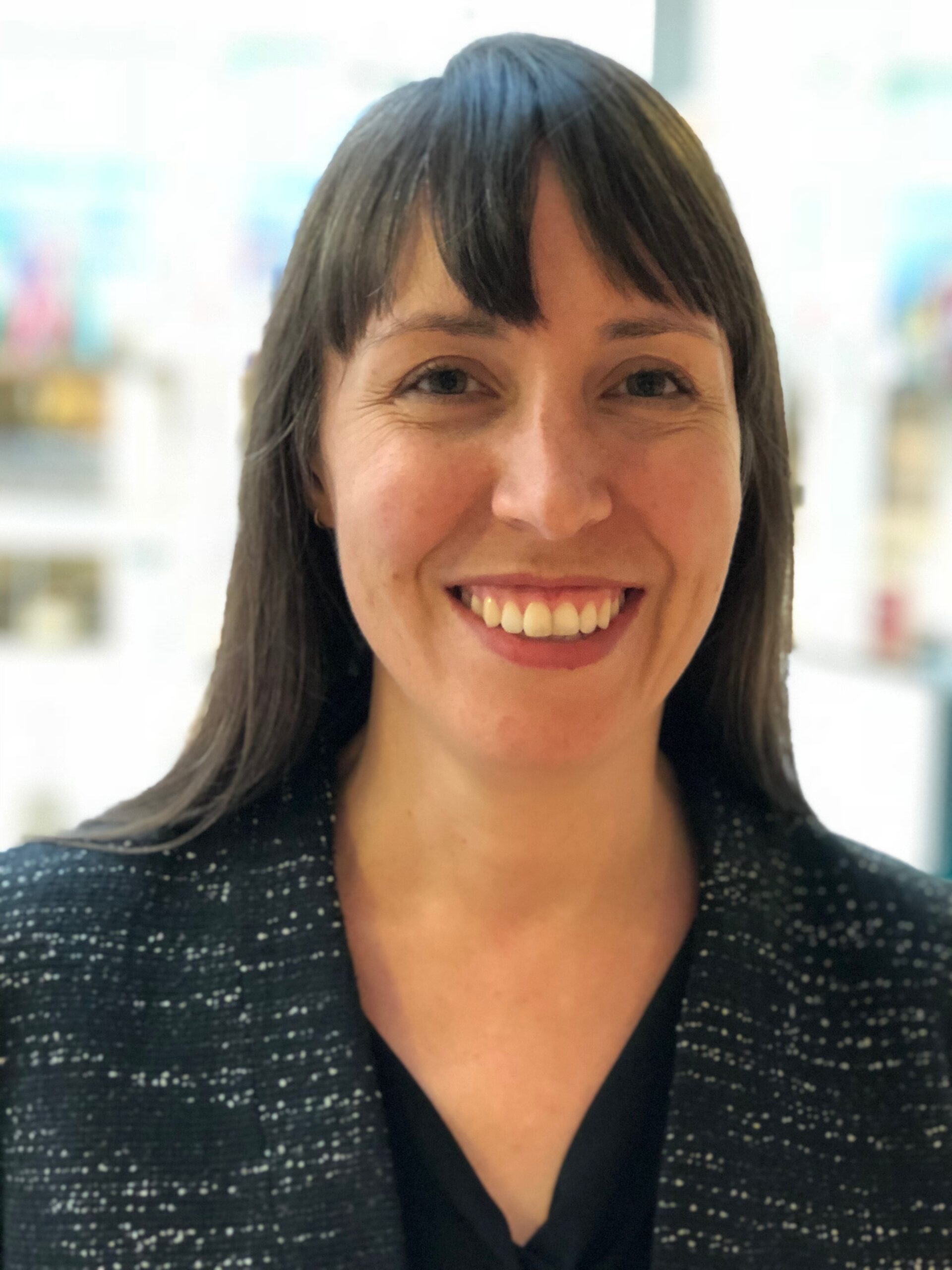
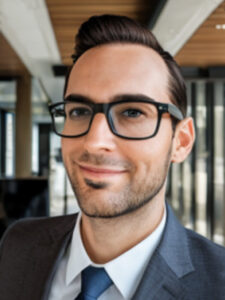

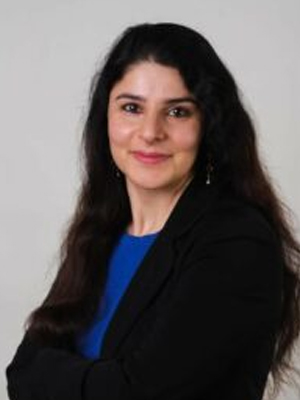
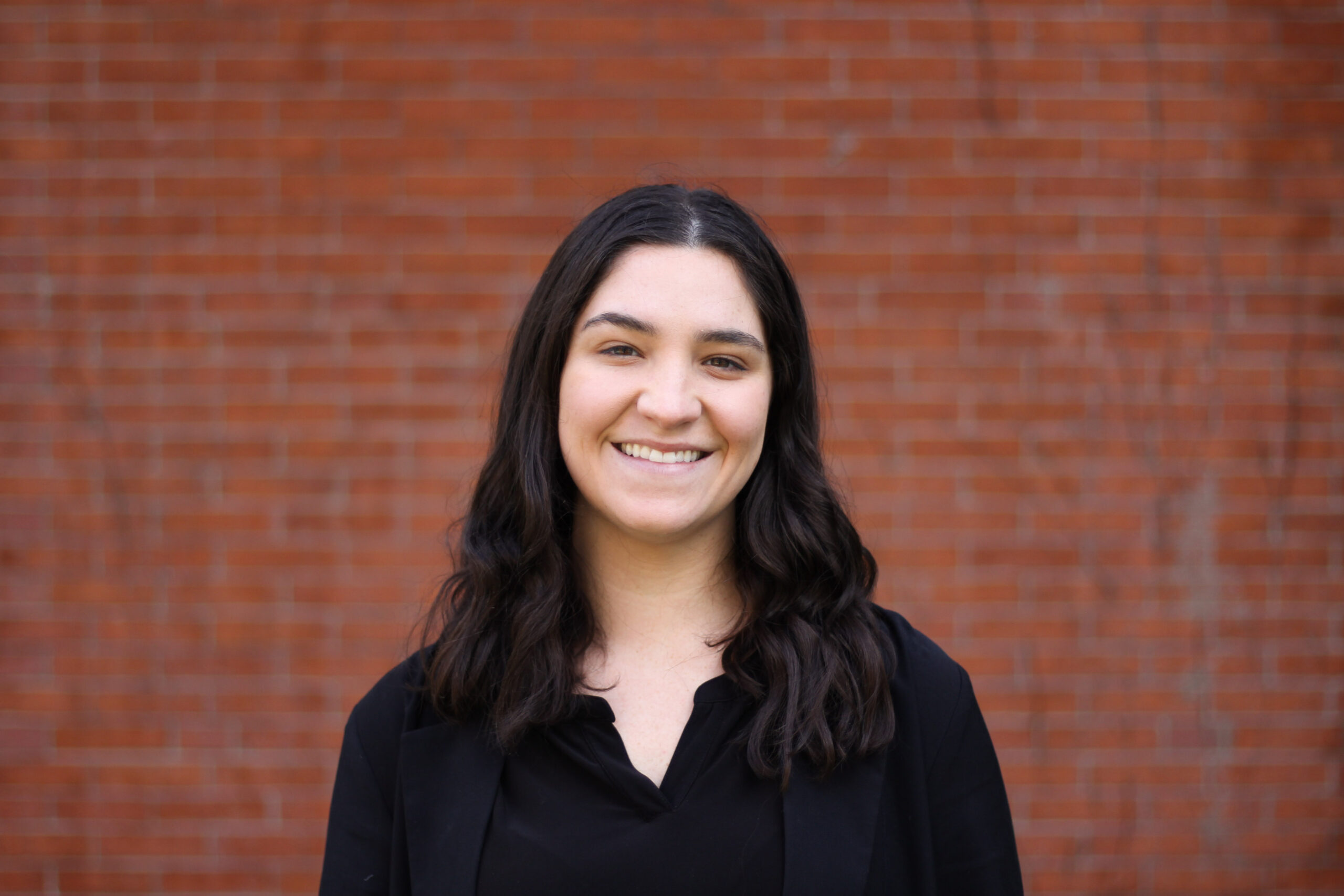
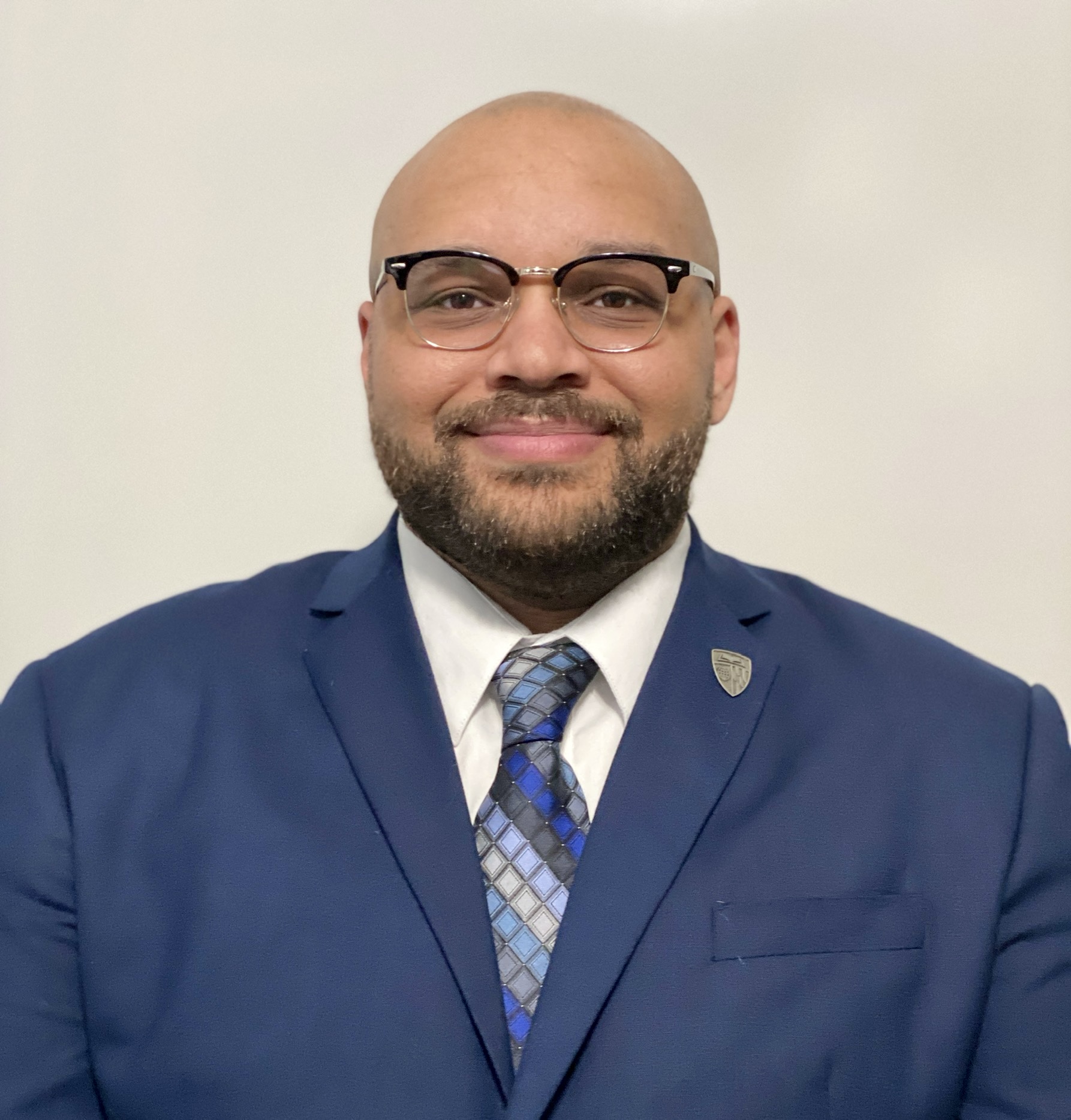
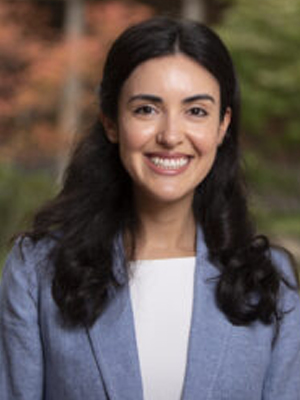
Chapters
The Society encourages members in different geographic regions to:
- Facilitate meetings among members who reside in close proximity.
- Provide guidance on local scientific, regulatory and policy issues that require an understanding of exposure to environmental or occupational agents.
- Provide a forum for promoting student participation in the field of exposure science.
Please email us here if you have questions about a current Chapter or establishing a new Chapter.
Asia Chapter
- Foster, promote and advance the science of exposure analysis related to environmental stressors in human populations and ecosystems.
- Promote communication among scientists, policy makers, the general public and other individuals or organizations interested in items listed in Objective A.
- Strengthen the impact of exposure science on environmental policy making.
- Serve as the focal point for interaction of members of the Society and other interested individuals from academia, government and industry in the East Asian countries, i.e., to provide communication and interaction opportunities for researchers, particularly young investigators and scientists associated with government whose opportunity to travel to international meetings is limited.
- Further improve understanding, awareness, and appropriate applications of exposure science, and to promote an exchange of ideas, communication and practical experiences among members of the academic, professional, industrial and regulatory communities engaged in exposure science; e.g., exposure scientists, epidemiologists, toxicologists and other scientists in academia, government and industry in the East Asian countries.
- Disseminate exposure information and concepts to all interested individuals.
- Foster integration and interaction of the various disciplines involved in exposure science.
- Hold scientific and educational meetings and workshops.
- Act as a resource for and provide support to the Society.
Europe Chapter
President: Paul Scheepers
Objectives
- Build a European Programme to generate, assess, exchange, and communicate experimental and model-based exposure data in support of a European strategy for exposure science in the 21st century.
- Advance exposure science with focus on closing knowledge gaps, building science-based and operational data and methods, fostering integration and interaction of disciplines involved in exposure science, and anchoring exposure information in decision-making by all stakeholders.
- Provide guidance and recommendations for exposure assessment in science and policy.
- Foster the inclusion of realistic exposure information in risk assessment, alternatives assessment and chemical substitution, high-throughput risk screening, life-cycle assessment, and other regulatory and non-regulatory frameworks and management tools.
- Strengthen the impact of exposure science on human health and environmental policies.
- Support trans-agency and trans-institutional coordination, education, and engaging a broader European stakeholder community including triggering and supporting a European infrastructure to facilitate sharing, generation and dissemination of exposure information.
To learn more visit: Europe Chapter website
If you are interested in learning more about The Europe Chapter activities or getting involved, please contact the committee by email europe@intlexposurescience.org.
Committees
Committees are the vital spark of the Society. Without active membership on our committees, the business of the Society would not get done! Join a committee and make an impact on the future of ISES!
WHY JOIN A COMMITTEE?
One of the most valuable membership benefits is the opportunity to serve the Society by participating on a committee. Joining a committee will provide you with an opportunity to drive the direction of the Society, influence priorities, and use your skills to advance the goals of the Society, all while providing you with networking opportunities, professional development, and personal growth.
HOW DO I JOIN A COMMITTEE?
If you are interested in joining a committee, please email the contact listed for the committee. Click on the name of the committee to learn more. Contact us here with other questions.
Awards Committee
Mission Statement
The mission of the Awards Committee is to recognize excellence in exposure science research and practice through presenting society awards.The mission is accomplished by soliciting and reviewing nomination packages and selecting the award winner. In addition to the formal announcement for nominations, members of the committee try to promote the awards program by reminding members of the society of the importance of nominating excellent individuals for awards.
If you are interested in learning more about the Awards Committee activities or getting involved, please contact the committee by email awards@intlexposurescience.org
Committee Co-Chairs
- Eric Hall — Co-Chair
- Tom McKones — Co-Chair
Diversity Committee
Mission Statement
The Diversity Committee is dedicated to fostering a culture of justice, diversity, equity, inclusion, and accessibility (JDEIA) within the International Society of Exposure Science (ISES), thereby empowering our organization to better achieve its objectives. We are committed to engaging, involving, and celebrating individuals from all segments of society, while actively pursuing and maintaining an environment that upholds fairness, respect, and inclusivity.
To this end, our mission encompasses the following strategic goals:
- Encourage and actively promote a diverse and inclusive membership within ISES, reflecting the variety of backgrounds, experiences, and perspectives that contribute to the richness of our organization.
- Ensure that ISES meetings and events attract and welcome attendees from diverse cultural and training backgrounds, fostering a sense of belonging, collaboration, and shared learning for all participants.
- Cultivate diverse leadership and representation within ISES committees and governance structures, creating opportunities for members from underrepresented groups to contribute their unique insights and expertise.
- Develop and implement initiatives that support and celebrate justice, diversity, equity, inclusion, and accessibility at all levels of the organization, including the creation of resources, policies, and programs that address systemic barriers and promote inclusive practices.
Continuously monitor, evaluate, and adapt our JDEIA efforts, utilizing feedback and data to inform our progress and drive future improvements.
By embracing and championing these goals, the Diversity Committee is committed to guiding ISES toward a future where all members feel valued, heard, supported, and empowered to contribute their distinct talents and perspectives to the collective pursuit of excellence in exposure science.
If you are interested in learning more about the Diversity Committee activities or getting involved, please contact the committee by email diversity@intlexposurescience.org.
Ethics Committee
Mission Statement
The purpose of the ISES Ethics Committee is to create a process and advisory role within the society to ensure we are providing the appropriate support and information to our members. ISES welcomes members from academia, government, and the private sector who serve as scientists, scientific managers, and policy makers. There are a variety of perspectives, purposes and roles the society plays within each of these three sectors.
If you are interested in learning more about the Ethics Committee activities or getting involved, please contact the committee by email ethics@intlexposurescience.org.
Committee Co-Chairs
Anna Rosofsky – Co-Chair
Stephanie Vivanco – Co-Chair
Finance Committee
Mission Statement
The Finance Committee is a standing committee and oversees the capital expenditures of the Society, is consulted on the annual budget, and approves the annual financial reports to the Board as prepared by the Treasurer.
If you are interested in learning more about the Finance Committee activities or getting involved, please contact the committee by email finance@intlexposurescience.org.
Committee Chair
- Cynthia Curl — Chair/Treasurer
General Scientific Meetings Committee
Mission Statement
The mission of the General Scientific Meetings (GSM) Committee is to solicit, review, and evaluate nominations for site selection and Chair(s) of the ISES Technical Organizing Committee (TOC) for future ISES Annual Meetings.
If you are interested in learning more about the General Scientific Meetings Committee activities or getting involved, please contact the committee by email gsm@intlexposurescience.org
Committee Chair
- Yoshi Ornelas Van Horne — Chair
Membership Committee
Mission Statement
The ISES Membership Committee is an advisory committee that works in close coordination with the Board, regional Chapters, and Secretariat. The Committee advises ISES on all aspects of membership, including benefits, engagement, and retention, promoting exposure science, as well as growing the Society worldwide.
If you are interested in learning more about the Membership Committee activities or getting involved, please contact the committee by email membership@intlexposurescience.org
Committee Co-Chairs
Pallavi Pant – Co-Chair
Yankai Xia – Co-Chair
Mentorship Committee
Mission Statement
The purpose of the mentorship committee is to provide highly motivated students, post-doctoral fellows, new researchers, and senior members in the field of exposure science with mentorship in exposure science and academia with established researchers from industry, government, and academia.
If you are interested in learning more about the Mentorship Committee activities or getting involved, please contact the committee by email mentorship@intlexposurescience.org.
Committee Co-chairs
Tianjun Lu — Co-Chair
Mahender Singh Rawat — Co-Chair
Nominations Committee
Mission Statement
The Nominations Committee is a standing committee and is responsible for the nominations for officers and councilors to the Board, giving strong consideration to a geographical, professional discipline, and constituency (academic, government, NGO/private sector) balance.
If you are interested in learning more about the Nominations Committee activities or getting involved, please contact the committee by email nominations@intlexposurescience.org.
Committee Chair
- Lesliam Quirós-Alcalá – Chair
Publications Committee
Mission Statement
The mission of the Publications Committee is to create and promote opportunities for ISES members to contribute published content related to the field of exposure science.
If you are interested in learning more about the Publications Committee activities or getting involved, please contact the committee by email publications@intlexposurescience.org.
Committee Chair
- Kai Zhang — Chair
JESEE Delegates
- Elaine A. Cohen– Editor in Chief
Student & New Researcher Committee
Mission Statement
The ISES Students and New Researcher (SNR) Committee offers mentorship, opportunities for career development, education, interaction with peers, and networking in addition to providing a platform for presentation and discussion of research.
If you are interested in learning more about the Student & New Researcher Committee activities or getting involved, please contact the committee by email snr@intlexposurescience.org.
Committee Co-Chairs
- Grant Tore — Co-Chair
- Xueying Zhang — Co-Chair
i-HBM Working Group
Mission Statement
The International Human Biomonitoring (i-HBM) Working Group aims to promote the use of population-level human biomonitoring data to inform public health decision-making by developing harmonized resources to facilitate the interpretation of human biomonitoring data in a health risk context.
If you are interested in learning more about the i-HBM Working Group activities or getting involved, please contact the committee by email ihbm@intlexposurescience.org.
Community Engagement Working Group
Mission Statement
To strengthen and enhance ISES members’ engagement with communities (i.e., residents, organizations, other stakeholders) impacted by harmful environmental exposures, facilitate collaboration with ISES members and impacted communities, and support and equip ISES’s members in their pursuit, conduct and dissemination of community-based science.
If you are interested in learning more about the Community Engagement Working Group activities or getting involved, please contact the committee by email commengage@intlexposurescience.org.
ISES Event Request Form
Are you organizing an event that would be of interest to our community? We invite you to share it with us. Please complete our event submission form with the relevant details.
Awards
The award eligibility, nominations and selection processes differ among the various awards. A brief summary of each award along with eligibility requirements and past winners are listed below.
Conference Awards
The ISES is inclusive to scientists from around the world. To further support students and new researchers from lower-middle-income countries, ISES has established the annual ISES Conference Awards. Every year, the Society accepts applications from students and new researchers from lower-middle-income countries and/or those who are experiencing extreme financial hardship.
Applications for the ISES 2024 Conference Awards have been awarded. Applications for the ISES 2025 Annual Meeting are open.
Annual Awards Procedures
Nominations
The Chair of the Awards Committee issues an e-mail call for nominations to the membership along with the nominations deadline. Our major Award, the Excellence in Exposure Science Award recognizes significant long-term achievements (more than 10 years post-doctoral) and requires a detailed nominating letter and at least one supporting letter. Neither the candidate nor the writers of the nominating and supporting letters are required to be ISES members. Recognition for early career (up to 3 years post-doctoral) and mid-career (up to 10 years post-doctoral) scientists (ISES member or not) are provided, respectively, by the IPA-DGUV and Joan Daisey Outstanding Young Scientist Awards. Both awards require the nominator to be an ISES member and require (for IPA-DGUV) or encourage (for Daisey) at least one additional supporting letter from someone not required to be an ISES member. The Best Student Paper and Young Investigator Meeting Awards require only an email nomination with a CV and manuscript (for best paper). Nominations are not accepted for the ISES Award for Best JESEE Paper, which is selected by the Awards Committee in consultation with the JESEE Editor.
Notifications
The successful candidates are notified by phone and/or email no later than two months before the annual ISES meeting. The ISES Secretary, Treasurer, and President, and the primary nominator of the candidate are notified by email.
Announcement & Presentation
Once the award recipients have been notified, a short announcement should be prepared for the website. The ISES President or chair of the Awards Committee will present all the awards at the annual ISES meeting.
Selections
Annual Award Categories
Excellence in Exposure Science Award
This award is inspired by the work of visionary individuals who have helped shape the field of exposure science and who supported the origins and growth of the ISES and have now passed on but left a strong legacy. The motivation for this award is the recent losses of iconic and ground-breaking researchers exemplified by Natalie Freeman, Michael Lebowitz, Paul Lioy, and Larry Needham. The award recognizes individuals who produce significant advances in the development and/or translation of exposure science and exhibit leadership and service in ISES and/or the exposure science community.
Eligibility
Any person, ISES member or not, whose highest degree was conferred in the calendar year more than 10 years prior to the year in which the award is to be given, and is not a member of the ISES Awards Committee, is eligible for this award.
Selection Criteria
- Significant scientific contribution to exposure science (e.g., sentinel paper linking indoor air pollution to human health; development of a program, dataset or tool that can enable or enhance interpretation of exposure science data; development of a new sampling tool, device or method that is currently or expected to be widely used, a significant number of high impact papers as lead author or supervising author).
- Service to exposure science community (e.g., ISES service as officer, councilor, committee chair or member; active mentor in ISES’s mentor program; history of mentoring junior scientists enabling them to become independent researchers; editor, associate editor, editorial board member, or reviewer of journal; study section member).
- Promote exposure science (e.g., discuss the important role of exposure science in selected studies; publish sentinel papers on the role of exposure science in environmental health; textbook author).
- Conduct research for practical translation (e.g., conduct interdisciplinary research with existing or expected high impact on policy changes; conducting research addressing emerging topics of immediate concern in environmental health; meta-analysis of studies to synthesize findings for policy change).
Selection Procedure
Upon close of nominations, the ISES Awards Committee Co-Chairs shall provide copies of all materials they have received to each ISES Awards Committee member for review. Each ISES Awards Committee member shall evaluate the candidates based on the materials supplied in the context of the above criteria.
Nature of the Award
The award shall consist of a plaque and honorarium. ISES may also provide support for travel to the meeting.
Presentation of the Award
The ISES President or chair of the Awards Committee will present the award at the Annual Meeting.
Award Lecture
The recipient will be expected to present an Award Lecture at the ISES Annual Meeting and to submit the PowerPoint presentation to the ISES webmaster for posting on the ISES website. The recipient is invited (put not required) to submit a manuscript of his/her lecture for publication in the Journal of Exposure Science and Environmental Epidemiology (JESEE).
2025
Miriam Diamond
Professor, Rutgers Department of Earth Sciences; School of the Environment
University of Toronto
2024
John Cherrie
Emeritus Professor of Human Health at Heriot Watt University
2023
Panos Georgopoulos
Professor, Rutgers The State University of New Jersey
2022
Dana Barr, PhD
Professor, Emory University
2021
Michael Jarrett, PhD
Professor, UCLA
2020
Rosemary Zaleski, PhD
Principal Scientist at Lumina Consulting
2019
Antonia Calafat, PhD
U.S. Centers for Disease Control and Prevention (CDC)
2018
Petros Koutrakis, PhD
Harvard University, T.H. Chan School of Public Health, Boston, M
Nominators should, in the context of the above criteria, describe the major contributions of the nominee to the science of human exposure assessment, and the nominee’s impact on the field, and provide a curriculum vitae, resume, or biographical sketch of the nominee in sufficient depth for evaluation by the ISES Awards Committee. A supporting letter from at least one other person familiar with the contributions of the nominee is necessary; other supporting letters are strongly encouraged. For questions regarding award nominations, or to nominate someone, email Tom McKone, and Eric S. Hall.
IPA/DGUV Award for Young Exposure Scientists
This award, new in 2009 and formerly called the DGUV/BGFA Award, is to foster research in exposure areas with linkages to biomonitoring for superior doctoral students working on their dissertation or in the first year postdoctoral experience and whose doctoral field is exposure sciences, occupational/environmental health sciences, toxicology, biochemistry, biology or a related field. This award from the DGUV* Institute for Prevention and Occupational Medicine (IPA) was created to represent its high regard for the work of Professor Jüergen Angerer in furthering biomonitoring in exposure sciences in Europe and the rest of the world.
*The DGUV (Deutsche Gesetzliche Unfallversicherung – German Social Accident Insurance) is an association of accident insurance institutions. Its members insure over 70 million people against the consequences of occupational, school and commuting accidents and occupational diseases.
Eligibility
Any person, ISES member or not, who is a doctoral student working on their dissertation or in the first three years of their postdoctoral experience prior to the year in which the award is given. The individual career stage is considered in selecting the winner of the award. An eligible candidate is one whose doctoral field is health sciences, toxicology, biochemistry, biology or a related field and who is not a member of the ISES Awards Committee.
Selection Procedure
Upon close of the nominations, the ISES Awards Committee Co-Chairs shall provide copies of all materials they have received to each ISES Awards Committee member for review. Each ISES Awards Committee member shall evaluate the candidates based on the materials supplied, and on published papers. Criteria for evaluation should include: (1) scientific quality of publications; (2) significance of the nominee’s research to the field of exposure analysis, and; (3) the nominee’s potential for making future contributions to the science of exposure analysis.
Nature Of the Award
The award shall consist of a plaque and 1500 Euros. The awardee may be invited to give a talk in Europe on his/her research
2025
Samantha Schildroth
Department of Epidemiology, Boston University School of Public Health
2024
Debasis Golui
Scientist, ICAR-Indian Agricultural Research Institute, New Delhi, India
2023
Lauren Koval
PhD Candidate
University of North Carolina at Chapel Hill
2022
Benedikt Ringbeck
PhD Candidcate, Universität Bochum, Germany
2021
Ata Rafiee, PhD
PhD Candidate, University of Alberta
2020
Jamaji C. Nwanaji-Enwerem, PhD
Harvard Medical School and Harvard Kennedy School
Cambridge, MA, USA
2019
Nicolas Lopez-Galvez
University of Arizona, Mel and Enid Zuckerman College of Public Health
Tucson, AZ, USA
2017
Stephanie Hammel
Duke University
Durham, NC, USA
2016
Marissa G. Baker
University of Washington
Seattle, WA, USA
2015
Jacqueline Biesterbos, Ph.D. candidate
Department of Health Evidence, Radboud University
Radboud University Medical Center
Nijmegen, NL
2014
Caterina Vacchi-Suzzi, Ph.D. candidate
Department of Preventive Medicine, Stony Brook University School of Medicine
Stony Brook, NY, USA
2013
Cristina Quinn, Ph.D. candidate
Department of Physical & Environmental Sciences, University of Toronto
Scarborough, CAN
2012
Binnian Wei, Ph.D. candidate
Environmental and Occupational Health Sciences Institute, Rutgers University
Rutgers School of Public Health
Piscataway, NJ, USA
2011
Liesel Seryak, Ph.D. candidate
Division of Environmental Health Sciences
The Ohio State University, College of Public Health
Columbus, OH, USA
2009
Marie Frederiksen, Ph.D. candidate
Department of Environmental Chemistry & Microbiology, Aarhus University, National Environmental Research Institute
Aarhus, DENs
A nomination shall consist of a nominating letter from a current ISES member describing the contributions of the nominee to the science of human exposure science, the nominee’s potential for making future contributions to the field, and a curriculum vitae, resume, or biographical sketch of the nominee in sufficient depth for evaluation by the ISES Awards Committee. The person submitting the nomination is required to obtain a seconding letter and is encouraged to solicit supporting letters from others familiar with the contributions of the nominee. For questions regarding award nominations, or to nominate someone, email Tom McKone, and Eric S. Hall.
Young Investigator Meeting Award
This award supports students and new researchers (researchers within 10 years of terminal degree) participation at the ISES annual meetings.
Eligibility
Recipients must be a current student or new researcher (researcher within 10 years of terminal degree).
Nature of the Award
The award shall consist of a certificate and $500 provided in reimbursement for meeting registration and/or travel costs incurred in attending the ISES annual meeting.
2025
Aram Lee
Department of Environmental Health Sciences, Soonchunhyang University, South Korea
2023
Debasis Golui
Scientist
ICAR-Indian Agricultural Research Institute, New Delhi, India
2023
Yan Lin
Postdoctoral Associate
Duke University
2022
Peng Gao
Assistant Professor, University of Pittsburg
2021
Bi Jianzhao
Postdoc, University of Washington
2020
Elyse Caron-Beaudoin
University of Toronto – Scarborough
Department of Physical and Environmental Science
Toronto – Scarborough, Canada
2019
Nathan Lothrop
University of Arizona
Mel and Enid Zuckerman College of Public Health
Tucson, AZ USA
2018
Donghai Liang, PhD, MPH
Emory University, Environmental Health
Atlanta, GA USA
2017
Darpa Jyethi, PhD
Indian Statistical Institute
North-East Centre at Tezpur
Applications must be submitted to the ISES Awards Committee by the stated deadline. The nomination consists of brief e-mail identifying the nominee and their qualifications along with a copy of the nominee’s curriculum vitae or resume. Additional material may be requested. For questions regarding award nominations, or to nominate someone, email Tom McKone, and Eric S. Hall.
Joan M. Daisey Award
Joan Daisey, a founding ISEA member and past president (1995-1996), passed away on February 29, 2000, after a year-long battle with cancer. Daisey was senior staff scientist at the U.S. Department of Energy’s Lawrence Berkeley National Laboratory (Berkeley Lab) and one of the nation’s leading experts on indoor air quality.
Upon learning of her death, the ISEA Executive Board voted to rename the Society’s Outstanding Young Scientist Award in honor of Dr. Daisey. The award was established in 1998, due largely to the efforts of Dr. Daisey, who chaired the Awards Committee at that time. She was known to particularly enjoy working with promising young scientists and helped guide numerous students in their doctoral research.
Earlier that year, the ISEA Awards Committee announced that Joan Daisey would be the recipient of the Constance L. Mehlman Award for 2000. A posthumous presentation of the award took place at the October conference in Monterey, at a function honoring her.
Eligibility
Any person, ISES member or not, whose highest degree was conferred in the calendar year less than 10 years prior to the year in which the award is to be given, and is not a member of the ISES Awards Committee, is eligible for this award.
Selection Procedure
Upon close of nominations, the ISES Awards Committee Co-Chairs shall provide copies of all materials they have received to each ISES Awards Committee member for review. Each ISES Awards Committee member shall evaluate the candidates based on the materials supplied and based on the above criteria.
Nature of the Award
The award shall consist of a plaque, ISES membership for one year, and $1000, which can be awarded as a check or as travel reimbursement to an ISES conference, at the discretion of the recipient.
2025
Amanda Wilson
Assistant Professor, Public Health Mel and Enid Zuckerman College of Public Health University of Arizona
2024
Donghai Liang
Assistant Professor, Gangarosa Department of Environmental Health Rollins School of Public Health, Emory University
2023
Courtney Carignan
Assistant Professor, Michigan State University
2022
Krystal Pollitt, PhD
Assistant Professor, Yake University
2021
Amina Salamova, PhD
Assistant Professor, Indiana University
2020
Peter Fantke, PhD
Technical University of Denmark (DTU)
Quantitative Sustainability Assessment
Lyngby, Denmark
2019
Lesliam Quiros-Alcala , PhD
University of Maryland
Maryland Institute of Applied Environmental Health (MIAEH)
College Park, MD, USA
2018
Kate Hoffman, PhD
Duke University
Nicholas School of the Environment
Durham, NC, USA
2017
Nicole Deziel, MHS, PhD
Yale School of Public Health
New Haven, CT, USA
2016
Marc-Andre Verner
Université de Montréal
Montreal, Canada
2015
Manish Arora
Department of Preventive Medicine,
Icahn School of Medicine at Mount Sinai
New York, NY, USA
2014
Dr. Jun Wu
Professor in Department of Environmental and Occupational Health Program in Public Health
University of California, Irvine
Irvine, CA
2013
Julian Marshall
University of Minnesota
Minneapolis, MN, USA
2012
Dr. Holger M. Koch
IPA – Institute for Prevention and Occupational Medicine
Ruhr-University Bochum
Bochum, Germany
2011
Jeremy A. Sarnat, Sc.D.
Professor of Environmental Health
Rollins School of Public Health
Emory University
Atlanta, GA, USA
2010
Dr. Ryan Allen
Faculty of Health Sciences
Simon Fraser University
Burnaby, BC, Canada
2009
Dr. Rufus Edwards
School of Medicine
University of California Irvine
Irvine, CA, USA
2008
Dr. Marsha Morgan
Exposure Measurements & Analysis
U.S. EPA
Research Triangle Park, NC, USA
2007
Pamela Williams, Sc.D.
Office of Research and Development
U.S. EPA
Washington, DC, USA
2005
Dr. Chensheng Alex Lu
Department of Environmental and Occupational Health
Emory University
Atlanta, GA, USA
2004
Dr. John L. Adgate
Division of Environmental and Occupational Health
School of Public Health
University of Minnesota
Minneapolis, MN, USA
2003
Dr. Lee-Jane Sally Liu
Department of Environmental & Occupational Health Sciences
University of Washington
Seattle, WA, USA
2002
Dr. David L. MacIntosh
Environmental Health and Engineering
Newton, MA, USA
2001
Dr. Dana Barr
Division of Laboratory Sciences
CDC National Center for Environmental Health
Atlanta, GA, USA
2000
Dr. Adrian Fernandez-Bremauntz
Ministry for the Environment
Natural Resources and Fisheries
Mexico City, Mexico
and
Dr. Valerie Zartarian
U.S. EPA Office of Research and Development
Reston, VA, USA
1999
Dr. Nicole Janssen
Wageningen University
Wageningen,The Netherlands
1998
Dr. Alison C. Cullen
Graduate School of Public Affairs
University of Washington
Seattle, WA, USA
L
A nomination shall consist of a nominating letter from a current ISES member describing the contributions of the nominee to the science of human exposure assessment, the nominee’s potential for making future contributions to the field, and a curriculum vitae, resume, or biographical sketch of the nominee in sufficient depth for evaluation by the ISES Awards Committee. The person submitting the nomination is encouraged to solicit supporting letters from others familiar with the contributions of the nominee. For questions regarding award nominations, or to nominate someone, email Tom McKone, and Eric S. Hall.
A physical chemist by training, Daisey was at the Berkeley Lab for 14 years and headed the Environmental Energy Technologies (EET) Division’s Indoor Environment Department, with a 60-person staff and a budget of more than $6 million per year. She was also chair of the US Environmental Protection Agency’s (EPA) Science Advisory Board, an influential national board that helps guide the direction of EPA research.
Born in New York City, Daisey received her B.A. in chemistry from Georgian Court College in New Jersey in 1962 and her Ph.D. in physical chemistry from Seton Hall University in 1970. With more than 25 years of research experience, Daisey’s more than 100 publications focused on organic pollutants and indoor and outdoor air particles. Her work in this field included studies of the physical and chemical nature, sources, transport, and fate of pollutants, as well as exposure assessment and exposure pathways.
“Joan’s contributions — as an outstanding researcher within the Department, as an advocate for linking indoor and outdoor air quality research, and as a national leader on environmental research — were magnificent,” said Mark Levine, Division Director of EET. “Equally, we will miss her joy in doing research, her impatience with impediments to progress, her sense of humor, and her acceptance of her co-workers as friends and part of her extended family.” Added Charles V. Shank, Director of Berkeley Lab, “Joan has had an enormous impact here, and we will miss her very much.”
“She will be remembered as an outstanding, creative, and energetic scientist with a positive outlook and a sense of humor,” said fellow scientist Bill Fisk. “She was unselfish and treated her colleagues with warmth and respect.”
While a researcher at New York University Medical Center’s Department of Environmental Medicine (1975-1986), Daisey was a principal investigator in numerous multi-institutional field projects, including the Airborne Toxic Elements and Organic Substances Study. As a senior scientist at Berkeley Lab, she was a principal investigator for many research projects on environmental tobacco smoke, ventilation, infiltration and indoor air quality, the health effects of volatile organic compounds and particles, and on the soil-to-gas transport of volatile organic compounts into buildings as an exposure pathway. She had a strong interest in the continuum between indoor and outdoor air quality and helped to build a bridge between the respective research communities.
Daisey took a lively interest in guiding the development of new areas of research. She was active in the public arena, where she applied her scientific expertise and knowledge of toxic chemicals to the problem of reducing their exposures to human beings. She was a member of EPA’s Science Advisory Board since 1987 and was chair of the Board since 1998. Her work with the Board included participation in several committees, including the EPA’s Human Exposure and Health Subcommittee of the Advisory Board’s Integrated Risk Project. She served on the DOE Lab Directors’ Environmental and Occupational/Public Health Standards Steering Group since 1993; the Board of Scientific Counselors of ATSDR (1988-1990); and the NRC’s Committee on Advances in Assessing Human Exposure to Airborne Pollutants from 1987 to 1989. Daisey worked on the peer review committees that developed emergency plans for the sampling and analysis of data from the Love Canal area of New York State in 1987 and 1988.
ISES Award for Best Student Paper
The first author of an eligible publication must currently be a student or have been a student at the time in which the published work was submitted for publication. Further, the first author must be a current ISES member.
Eligibility
The first author of the publication must be a current ISES member. The paper must have been published (in print) in the prior volume year.
Selection Criteria
Papers will be judged on criteria that include the following:
- The paper is creative and/or innovative. This can be in terms of methods, organization, generation of knowledge, or in translation between science and applications.
- The quality of the science is high. Measurements and methods should be transparent, verifiable, reproducible, rigorous, reliable, and relevant.
- The presentation of the science is of high quality.
- The paper is visually attractive, economical in use of words, tables, figures, and space, and is well organized, clear, and easy to read.
- Findings are provided in context with other work (e.g., corroborative, weight of evidence, etc.). Results are presented in a clear and unbiased manner (e.g. negative as well as positive results are discussed, and are not over-extrapolated).
Selection Procedure
Upon close of nominations, the ISES Awards Committee shall evaluate the candidates based on the materials supplied and the criteria for the award. This award is not mandatory, and in the year in which nominations are received, the award will only be given when submissions are determined to be representative of the best student research published in exposure science. The ISES Awards Committee may, at their discretion, award two qualified candidates in a given year.
Nature of the Award
The award shall consist of award certificates for all authors of a selected paper, with the first author also receiving a one-year membership to ISES. ISES may also acknowledge runner-up papers with letters of recognition for all authors.
2025
Rebecca M. Hoehn
Ph.D. candidate, Duke University, Graduate Programs in Environment and Integrated Toxicology and Environmental Health
2024
Ashna Lallmahomed
PhD Candidate,University Rennes, EHESP, Inserm, Irset (Institut de recherche en santé, environnement et travail) – UMR_S 1085, F-35000 Rennes, France
2023
Insung Kang
Senior Research Associate
Illinois Institute of Technology
2022
Sonja Wrobel
PhD Candidate, Universität Bochum, Germany
2021
Nicolo Aurisano
Student, Technical University of Denmark
2020
The impact of air exchange rate on ambient air pollution exposure and inequalities across all residential parcels in Massachusetts.
Anna Rosofsky, PhD
2019
Relationships of long-term smoking and moist snuff consumption with a DNA methylation – age relevant smoking index: an analysis in buccal cells
Jamaji Nwamaji-Enweren
2018
Asthma trajectories in a population-based birth cohort.
Impacts of air pollution and greenness.
Hind Sbihi (ISES), Mieke Koehoorn, Lillian Tamburic, and Michael Brauer. American Journal of Respiratory Critical Care Medicine, Vol 195, Iss 5, pp 607–613, (2017).
2017
Quantification of Polybrominated and Polychlorinated Biphenyls in Human Matrices by Isotope-Dilution Gas Chromatography–Tandem Mass Spectrometry
Elizabeth Marder, PhD. Toxicology 40, no. 7 (2016): 511-518
Nominations must be submitted to the ISES Awards Committee by the stated deadline. There are no restrictions on who may nominate, and self-nominations are encouraged. The nomination e-mail should include a copy of the nominee’s manuscript and the nominee’s curriculum vitae, or resume. Additional information, such as a verification of student status may be requested. For questions regarding award nominations, or to nominate someone, email Tom McKone, and Eric S. Hall.
ISES Service Award
The ISES Service Award recognizes ISES members who demonstrate outstanding service through commitment and dedication to supporting the mission and/or functioning of the Society. This award honors ISES members who: a) provide long-term service and/or leadership on one or more ISES Committees; b) volunteer to serve on ISES Technical Operations Committees (TOCs) for annual and/or joint meetings while performing at a high level; c) volunteer for new ISES initiatives and/or special working groups; d) served with distinction as an ISES Board Member; e) served with distinction as an ISES Committee Chair; f) actively promote ISES; g) recruit new members to ISES, and; h) other accomplishments noted by the Awards Committee.
Eligibility
Only ISES members can receive this award, and the award can be received only one time by ISES members
Selection Procedure
The ISES Awards Committee will review each nomination and select at least one award recipient based on the detailed writeups provided for each award nominee.
Nature of the Award
Award will consist of a plaque and membership for the following year.
2025
Nicole Tulve
U.S. Environmental Protection Agency’s Office of Research and Development (ORD)
A Society member must submit to the Awards Committee a nomination letter and supporting information detailing the nature of the service accomplished by the nominee. Examples of outstanding service and Societal impact may include:
- Exemplary, committed, and sustained leadership on an existing ISES committee.
- Extended duration of committee membership (e.g., 10+ active years)
- Development and/or implementation of a new initiative or program within the Society.
- Outstanding, consistent, and enthusiastic support of ISES mission and goals through multiple committee memberships, hosting annual meetings, promotion of the Society, and/or recruitment of new members.
For questions regarding award nominations, or to nominate someone, email Tom McKone, and Eric S. Hall.
History of ISES
Historical ISEA/ISES Information:
The International Society of Exposure Assessment (ISEA) was founded in 1989, and the Journal of Exposure Analysis and Environmental Epidemiology (JEAEE) was established in 1991. The words “analysis” and “assessment” were replaced with “science” in 2006 and 2008, and became ISES and JESEE, respectively. The International Society of Exposure Science (ISES), previously named the International Society of Exposure Analysis and later the International Society of Exposure Assessment, was founded in 1989 as a nonprofit organization to advance the field of exposure science and promote the use of exposure science in the fields of public, occupational, and environmental health. The Journal of Exposure Science and Environmental Epidemiology is the official journal of the ISES. ISES members are experienced in many disciplines, including exposure assessment, chemistry, biochemistry, risk assessment, biostatistics, physiology, toxicology, epidemiology, ecology, environmental fate, transport, and transformation, exposure modeling, air pollution measurement and modeling, and environmental engineering. The society’s membership includes academic, governmental, and private sector scientists, scientific managers, and policy makers who have a common interest in the field of exposure science.
Past Presidents
1990-1991 Myron Mehlman*
1992 Jerry Schroy
1993 Paul Lioy*
1994 Morton Lippmann
1995 Ken Sexton
1996 Joan Daisey*
1997 Tom McKone
1998 Judith Graham
1999 Mike Lebowitz*
2000 Matti Jantunen
2001 Haluk Ozkaynak
2002 John Kissel
2003 Larry Needham*
2004 Erik Lebret
2005-2006 Mike Dellarco
2007-2008 Clifford Weisel
2009-2010 Tina Bahadori
2011-2012 Dana Barr
2013-2014 Richard Fenske
2015-2016 Timothy Buckley
2017-2018 Judy LaKind
2019-2020 Paloma Beamer
2021-2022 Brian Curwin
2023-2024 Lisa Baxter
2025-2026 Erin Hayes
2026-2027 Ana Rule
Founding Members
Gerald Akland
Joseph Behar
Michael Callahan
Steven Colome
Joan Daisey*
Michael Dellarco
Paul Lioy*
Michael Lebowitz*
Lars Möhave
Demetrios Moschandreas
Myron Mehlman
Wayne Ott
James Quackenboss
Bernd Seifert
Jack Spengler
Jerome Wesolowski*
Upcoming Events
2026: Vancouver, BC, Canada, ISES Annual Meeting
Past Events
2025: Atlanta, GA, USA, Joint Annual Meeting of the International Society of Exposure Science and the International Society of Environmental Epidemiology – Global Environmental Health Equity across the Lifespan
2024: Montreal, QB, Canada, 34th ISES Annual Meeting – Exposures that Impact Health in Vulnerable Populations
2023: Chicago, Illinois, 33rd ISES Annual Meeting – Connecting Communities & Science through Addressing Environmental Exposures
2022: Lisbon, Portugal, 32nd ISES Annual Meeting – From Exposure to Human Health: New Developments and Challenges in a Changing Environment
2021: Virtual Meeting, 31st ISES Annual Meeting – Multisector Engagement for Addressing Emerging Environmental Exposures
2020: Virtual Meeting, 30th ISES Annual Meeting – Changing Exposure, Climate, and Health: From Science to Policy
2019: Kaunas, Lithuania (with ISIAQ), 29th ISES/ISIAQ Conference – The built, natural, and social environments: impacts on exposures, health and well-being
2018: Ottawa, Canada (with ISEE), 28th ISES Annual Meeting – Addressing Complex Local and Global Issues in Environmental Exposure and Health
2017: Durham, NC, 27th ISES Annual Meeting – Integrating Exposure Science Across Diverse Communities
2016: Urecht, Netherlands, 26th ISES Annual Meeting – Interdisciplinary Approaches to Health and the Environment
2015: Henderson, NV USA, 25th ISES Annual Meeting – Exposures in an Evolving Environment
2014: Cincinatti, OH USA, 24th ISES Annual Meeting – Exposure Science Integration to Protect Ecological Systems, Human Well-Being, and Occupational Health
2013: Basel, Switzerland (with ISIAQ), 23rd ISES Annual Meeting –Environment and Health – Bridging South, North, East and West
2012: Seattle, WA USA, 22nd ISES Annual Meeting – Lessons Learned: Contributions of Exposure Science to Environmental and Occupational Health
2011: Baltimore, MD USA, 21st ISES Annual Meeting – Advancing Exposure Science for Environmental Health
2011 Special Section: Milan, Italy, International Society of Exposure Science (ISES) and the Society for Environmental Toxicology and Chemistry (SETAC) Joint Conference
2010: Seoul, Korea, 20th ISES Annual Meeting –Technology, Environmental Sustainability and Health
2009: Minneapolis, MN USA, 19th ISES Annual Meeting –Transforming Exposure Science in the 21st Century
2008: Pasadena, CA USA, 18th ISES Annual Meeting –Exposure and Health in a Global Environment
2007: Durham, NC USA, 17th ISES Annual Meeting – Partnerships: Exploring Integrative Approaches in Exposure Assessment
2006: Paris, France, 16th ISEE/ISES Conference
2005: Tucson, Arizona, 15th Annual Meeting of the International Society of Exposure Assessment
2004: Philadelphia, PA, 14th Annual Meeting of the International Society of Exposure Assessment
2003: Stresa, Italy, 13th Annual Meeting of the International Society of Exposure Analysis
2002: Vancouver, BC, 12th Annual Meeting of the International Society of Exposure Analysis, in partnership with the International Society of Environmental Epidemiology (ISEE).
2001: Charleston, SC, 11th Annual Meeting of the International Society of Exposure Analysis
2000: Monterey, CA, 10th Annual Meeting of the International Society of Exposure Analysis
1999: Athens, Greece, 9th Annual Meeting of the International Society of Exposure Analysis in partnership with the International Society of Environmental Epidemiology (ISEE).
1998: Boston, MA, 8th Annual Meeting of the International Society of Exposure Analysis
1997: Research Triangle Park, NC, 7th Annual Meeting of the International Society of Exposure Analysis with the Air and Waste Management Association (AWMA)
1996: New Orleans, LA, 6th Annual Meeting of the International Society of Exposure Analysis with the Society for Risk Analysis (SRA).
1995: Noordwijkerhout, The Netherlands, 5th Annual Meeting of the International Society of Exposure Analysis with the International Society of Environmental Epidemiology (ISEE).
1994: Research Triangle Park, NC, 4th Annual Meeting of the International Society of Exposure Analysis with the International Society of Environmental Epidemiology (ISEE).
1993: Helsinki, Finland, 3rd Annual Meeting of the International Society of Exposure Analysis with the the International Society of Indoor Air Quality (ISIAQ).
1992: San Diego, CA, 2nd Annual Meeting of the International Society of Exposure Analysis with the Society for Risk Analysis (SRA).
1991: Atlanta, GA, 1st Annual Meeting of the International Society of Exposure Analysis30
